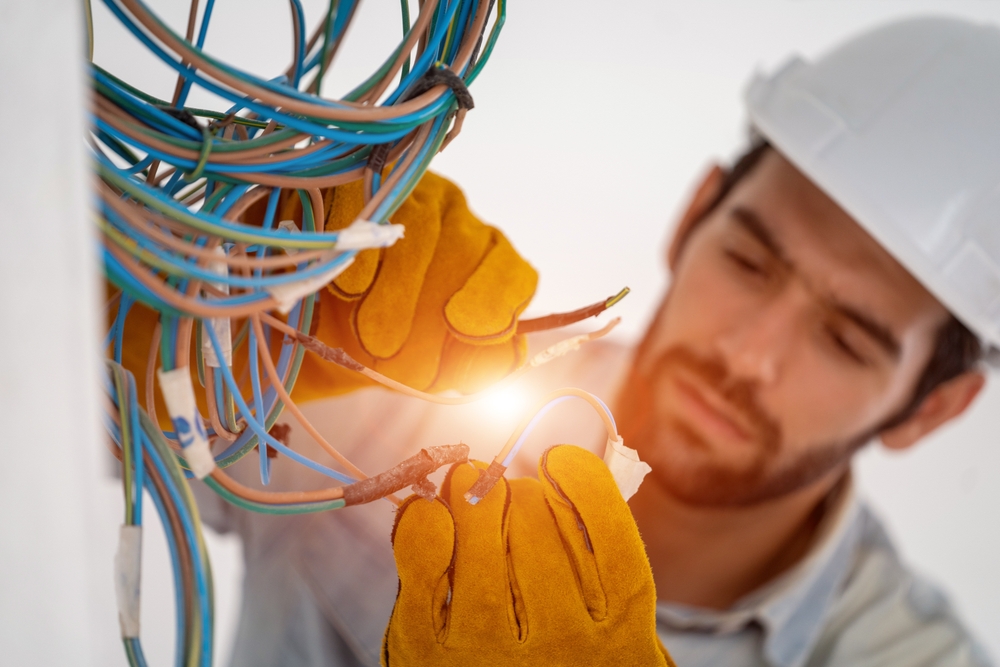
DIY projects are popular because they save money, offer a sense of accomplishment, and let you personalize your home. But not all shortcuts are created equal. Some seem harmless but can set the stage for tragic accidents that cause injury, property damage, or worse. Rushing through a task or skipping key steps may feel efficient, but the risks often outweigh the benefits. Understanding the dangers behind DIY shortcuts is crucial for anyone who values safety. Before you pick up that hammer or power drill, it’s worth knowing which shortcuts could end in disaster.
1. Skipping Electrical Safety Steps
Electrical work is one area where DIY shortcuts can cause tragic accidents. Many homeowners think they can handle simple wiring or outlet swaps. But skipping steps like turning off the main breaker or using a voltage tester can lead to shocks, burns, or fires. Even experienced DIYers get overconfident and make mistakes. Electrical codes exist for a reason—to protect you and your home. If you’re not sure about a project, hire a licensed electrician. A shortcut here can result in long-term consequences, including property loss or severe injury.
2. Using Makeshift Ladders or Scaffolding
Grabbing a chair or stacking boxes to reach a high spot seems like a clever time-saver. In reality, this shortcut is a leading cause of tragic home accidents. Falls from makeshift ladders often result in broken bones, head injuries, or even fatalities. Proper ladders and scaffolding are designed for stability and safety. Resist the urge to improvise—take the time to use the right equipment. It might take longer, but it could save you from a trip to the ER.
3. Ignoring Proper Ventilation with Paints and Chemicals
Painting indoors or using strong adhesives without ventilation is a shortcut with hidden dangers. Fumes from paint, varnish, or cleaning agents can cause dizziness, headaches, or respiratory distress. In extreme cases, they can lead to tragic accidents like fainting and falls. Always read labels and ventilate your workspace with open windows or fans. For some projects, a mask or respirator is essential. Don’t underestimate the risks of chemical exposure—protect your lungs and your health.
4. Overloading Electrical Circuits
Adding a few extra outlets or plugging in multiple devices may seem harmless. But overloading circuits is a DIY shortcut that can cause fires. Many tragic accidents start with a simple extension cord or power strip. Circuits have limits, and exceeding them can overheat wires behind your walls. If you need more power, consult with a professional about upgrading your system. Never sacrifice safety for convenience when it comes to electricity.
5. Skipping Stud Finders When Hanging Heavy Objects
Mounting shelves, TVs, or cabinets without locating a stud is a common DIY shortcut. Wall anchors or drywall alone are rarely strong enough for heavy loads. The result? Shelves can collapse, TVs can fall, and serious injuries can occur. Always use a stud finder or tap carefully to locate solid support. Take your time with this step. A few extra minutes can prevent tragic accidents and costly repairs.
6. Neglecting Gas Line Safety
DIYers sometimes attempt to install or move gas appliances without the right tools or knowledge. This shortcut is particularly risky. Even a small leak can cause explosions or carbon monoxide poisoning, leading to tragic accidents. If your project involves gas lines, call a certified professional. The risks are simply too high to gamble with your safety or your family’s well-being.
7. Using Power Tools Without Proper Guards
Removing safety guards from saws, grinders, or other power tools might make a job feel faster. But these guards are there to protect fingers, hands, and eyes. Many tragic accidents happen when a guard is set aside “just this once.” Always read the manual and keep safety equipment in place. If a tool feels unsafe, stop and reassess. There are no shortcuts worth risking a trip to the hospital.
How to Avoid Tragic Accidents with Smarter DIY
DIY shortcuts can be tempting, especially when you’re eager to finish a project or save money. But as we’ve seen, some shortcuts can lead to tragic accidents that cost far more than you bargained for. The primary keyword here is “tragic accidents,” because the consequences of a few skipped steps can be permanent. Take your time, use the right tools, and don’t be afraid to call in a professional for jobs that are beyond your skill level. Your safety and your family’s well-being are always worth more than a shortcut.
What’s the most dangerous DIY shortcut you’ve ever taken—or seen? Share your stories and safety tips in the comments below!
What to Read Next…
- 6 DIY Repairs That Can Void Your Warranty Without Warning
- 9 DIY Mistakes That Cost More Than Just The Repairs
- 6 DIY Projects That Could Get You Sued
- 7 DIY Mistakes That Will Sink Your Home’s Resale Value
- 6 DIY Fixes That Ended In Disaster And Why You Shouldn’t Try Them
The post 7 DIY Shortcuts That End in Tragic Accidents appeared first on Clever Dude Personal Finance & Money.







